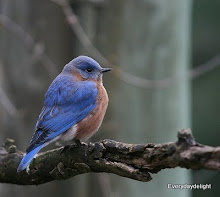What is the difference between Autumn and Fall? If I had grown up in the "New England" part of America I may have known this without giving it much thought.
As you may know by now I am a very curious person and love the Internet, if for no other reason, than - to me it is a huge dictionary and/or encyclopedia of world thought and/or knowledge! Like everything else in life, take what you want and leave the rest.
Using a search engine can be both fun and somewhat overwhelming. When searching my question of "What is the difference between Autumn and Fall", I found the responses to be very amusing and informative.
This in particular caught my attention in its simplicity.
"There is no difference in meaning between Fall and Autumn according to the dictionary. However, in common usage Fall usually refers to what is happening in nature. Basically, the leaves turn colors. Autumn is the name of the season. The Autumnal equinox occurs 22-23 September. The season continues until 21-22 December."
And, then there is this very interesting view point from a Canadian perspective.
"What is the difference between fall foliage and fall colours or colors? We are really looking at the perception and familiarity of terms when differentiating between Americans and Canadians. This is especially true when we look at the spelling of color. Another important distinction is the notion of the “Leaf Peeper”, a term describing the tourists that flock to the North East New England area of the U.S. during the fall foliage season. Peepers tend to get arrested in Canada.
The British (English) prefer Autumn, as do many descendents of the United Empire Loyalists. However, Canadians being somewhat different than either the Brits or Yanks know the real “New England” is really Upper Canada, and the Province of Ontario. The dense hardwood forests of Maples, Oaks, and Birch are abundant and display some of the best fall colors and foliage in North America. Many would say the best colours in the world are in Ontario during the autumn season." OK now, If - - - - - - - you are a "Leaf Peeper", - - - - - - please be very careful ! ! !
Moving on. Let's look at a quite comprehensive response to the question.
"Autumn (also known as fall in North American English) is one of the four temperate seasons. Autumn marks the transition from summer into winter, usually in late September (northern hemisphere) or late March (southern hemisphere) when the arrival of night becomes noticeably earlier.
The word autumn comes from the Old French word autompne (automne in modern French), and was later normalized to the original Latin word autumnus. There are rare examples of its use as early as the 12th century, but it became common by the 16th century.
Before the 16th century, harvest was the term usually used to refer to the season. However as more people gradually moved from working the land to living in towns (especially those who could read and write, the only people whose use of language we now know), the word harvest lost its reference to the time of year and came to refer only to the actual activity of reaping, and fall, as well as autumn, began to replace it as a reference to the season.
The alternative word fall is now mostly a North American English word for the season. It traces its origins to old Germanic languages. The exact derivation is unclear, the Old English fiæll or feallan and the Old Norse fall all being possible candidates. However, these words all have the meaning "to fall from a height" and are clearly derived either from a common root or from each other. The term came to denote the season in the 16th century, a contraction of Middle English expressions like "fall of the leaf" and "fall of the year".
During the 17th century, English immigration to the colonies in North America was at its peak, and the new settlers took their language with them. While the term fall gradually became obsolescent in Britain, it became the more common term in North America, where autumn is nonetheless preferred in scientific and often in literary contexts."
Next, let's look a tad bit more at Science. Stay with me now. Just a little more won't hurt !
"The Scientific Basis For Autumn - Why Leaves Fall
The process by which nutrients from the leaves are changed into other forms and drawn into the stems and roots is very efficient, and by it's end, the only remnants in the leaves will be cell walls and nutrient depleted protoplasm. At the base of the leaf petiole, where the leaf is attached to the stem, two types of cells are formed.
Parenchyma cells, which are very soft, are formed on the leaf side, Suberized cells which are waxy and impermeable are formed on the tree side to act as a protective seal. Eventually, the vascular bundles, the veins of the leaf, are all that hold the leaf to the tree. The vascular bundles break, or are torn by the wind, and the leaf falls, leaving what is called a bundle scar, and a bud for next years growth."
THERE WILL NOT BE A TEST LATER.
If you are still with me, that's good and - - - Thank You.
I hope you have a fun day and that you learned something new. I know, I did ! ! !
P.S. How does this happen to me? I was not going to post today. Yes, you are right. I have avoided doing things on the "to do list"!










































































